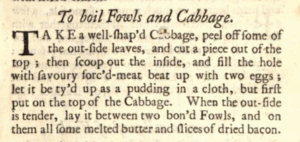One of the ways I go about criticizing a suggested government program or change in law is to simply ask questions of the proponent. Things like, “explain to me in very simple terms why you think this program will work?” And “what evidence is there that this proposed government program or change in law will make things better?” Through a series of questions, I can usually expose the flawed assumptions behind the proposals, peeling back the onion and get to the core rationale of most of these ideas, where an exasperated policymaker throws up their hands and says, “well, Paul, we have to do something.” And there it is. — Paul T. Martin
It’s an interesting point of view. I’m watching a local community melt down because the school system screwed up in a big way and is $5mil in the hole. They all want someone to DO SOMETHING!!! Except that there’s very little to do, and it must be done in a very orderly fashion. In other words, they ARE doing something. They’re just not doing it at the speed the people in the community want.
There was a shooting. Now everyone wants guns banned (again) to “stop school shootings.” Except it wasn’t a school shooting, it was a church shooting, and the people calling for disarmament are people who don’t have any skin in the game (ie they have no guns)… and the shooter was part of THEIR community, not ours. But it doesn’t matter, someone has to DO SOMETHING!!!
This happens all around us. People assume that because we have information (true and otherwise) at the tip of our fingers, that a) it’s true, and b) we can act at the same speed as we can research. Both those points are incorrect. Between general lack of knowledge and the influx of deepfakes and AI writing, telling truth from fiction is difficult right now. And we cannot possibly act at the speed at which we’re reading. Not only is it physically impossible, it’s also stupid, because we have to take time to figure out what the right thing is to do.
I often find myself asking, what would they have done in the 15th century? the 18th century? the 40s? the 80s? I ask myself this because there’s this assumption that we now know better than we did in the past (not entirely inaccurate, I might add), but we can only put that into practice if we look at today’s problems as a reflection of the past. For instance, there may be many ways to handle the local school problem(s), and they are REAL problems, but rushing around like chickens with our heads cut off does nothing. The folks that are pausing to regroup, to find out where the mistakes were made, are harkening back to the 40s IMO. What happened? How did it get so bad? What are the three most likely successful paths forward? Of those three, which would the public prefer us to take, and why? THAT is how one moves forward with stuff like this, because “the public” doesn’t have a clue as to how this stuff works. Right now they’re crowing happily over their only competent board member choosing to resign, because “it’ll save them money!” That means the bulk of them don’t know that board members don’t get paid. That’s … a good example of why the current mess happened.
“Those who forget their history are condemned to repeat it.” This quotation is often attributed to the philosopher George Santayana, but it’s actually a misquotation. The actual quote is, “Those who cannot remember the past are condemned to repeat it.” The misquote assumes people learned the history in the first place. In today’s world, I suspect it’s assumed people didn’t learn history, or at least not truthful, accurate history.
What can people do when things like this happen? When a community melts down over something (real or imagined) there really isn’t much to do. You can throw your two cents in, but unless you’ve got special traction, it’ll likely fall on deaf ears. What you can do is hunker down, check your perimeter, and keep your head on a swivel. If you’ve got kids in the mix, move ’em somewhere else. Yes, that might mean schooling them at home (though at least in NH, that doesn’t mean you’re on your own, because VLACS is pretty bad ass, and I’m sure that other states have similar programs). It might mean tough times. Guess what? That’s life.
And therein is the difference between “them” and “us.” They will cry and scream and have temper tantrums, lay blame, point fingers… and do nothing. We will go in with possible solutions, and if the public solution doesn’t work, we’ll move on to the private one where we take care of our own. It doesn’t matter if it’s tough. It doesn’t matter if it strains us. We’ll do what’s right by ourselves and our kids, BECAUSE it’s right. And that’s enough to motivate us.











